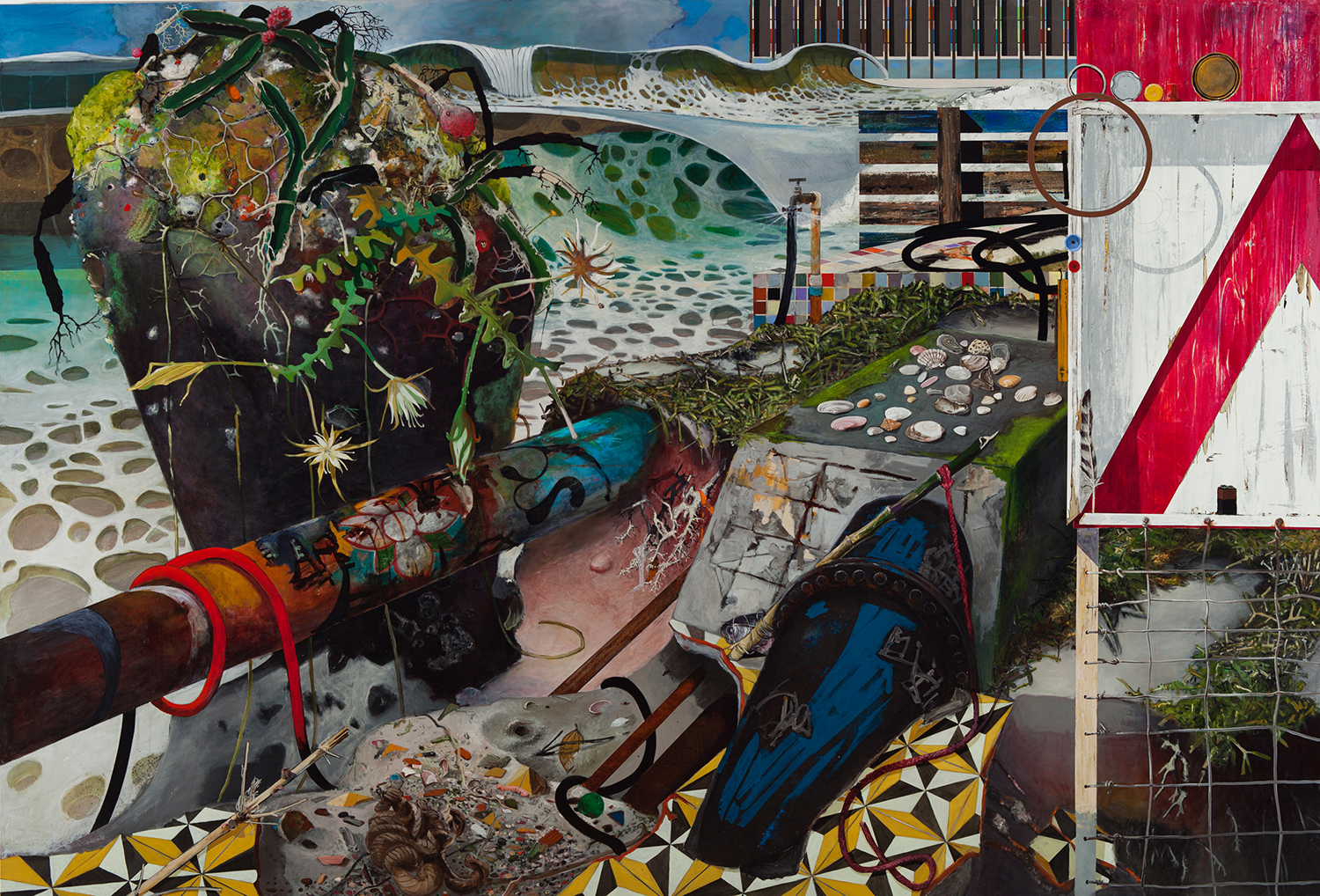
Luiz Zerbini, Erosão, 2014. Photo: Jaime Acioli
Temporary Programme Coordinator Lizzie Brown gives us a behind the scenes view on installing the South London Gallery’s current exhibition, Luiz Zerbini: Intuitive Ratio.
It is 8am on the first Sunday of summer. Sunlight streaming in, the SLG’s Victorian gallery resembles something between a playground and a stage set. Huge shipping crates fill the gallery. Vast sheets of bubble wrap release a crackling interference, resounding from ceiling to skirting board. The smell of wet paint and still-warm sawdust settles in the space.
Installation is underway for the SLG’s new exhibition, Intuitive Ratio. Paintings, collages and sculptural assemblages have been air-freighted from the artist’s studio in Rio de Janeiro. Now it’s time to unpack this precious cargo and a team of art handlers sets about manoeuvring the expansive canvases.
One of the first works to be unpacked is Erosão, a large-scale urban shorescape featuring an abundance of sea-junk thrown ashore. All manner of flotsam and jetsam is crystalised under a salt-layer of sea-spray, from the scarlet coil of a hose, to the green, waterlogged vegetation. Indigo, mustard and terracotta tiles embellish the surrounding scene. Their colourful geometry reappears in the next work we unpack, Colour Bugs. As we liberate this painting from its tissue paper, pixel-like pockets of neon are revealed, as bright as a backlit screen struggling into focus.
As installation progresses, the room’s sculptural centrepiece Razao Intuitiva is stacked with all the stuff of the sea. In bringing both found and fashioned objects to the gallery, Zerbini invites us into his studio, which is filled with the greenery and man-made objects he paints from life. Gingerly prising a coconut shell from paper wrappings, I inspect its parched fibres. Wiry and rough, they are strong, like horse hair. Huge slabs of rock, seemingly cleft directly from Rio’s beeches, are encrusted with shells and material scraps. Elsewhere, a fish no longer than your index finger peeks out from beneath a fishing net, its silver scales glinting among dry shells and bones. The cast of a large leaf resembles a starfish, each point running red with pigment. Sturdy bamboo shoots sprout from the floor’s wooden slats, scaling the gallery’s height to form a final towering centrepiece.
As the day’s work draws to a close, outside the traffic’s rhythm is noticeably slow. Waiting for the 171 bus on Peckham Road, the sound of warm tyres tearing from sticky tarmac could almost be waves washing over white sand. The thoroughfare is briefly replaced by the shores of Rio, the tide gently withdrawing, before the bass of a car radio and the crescendo of a siren swell into reception once more.